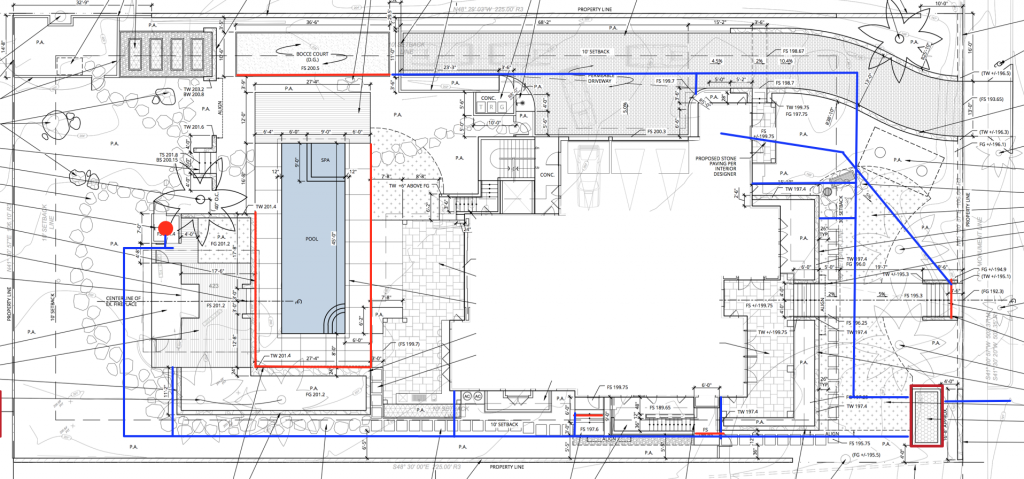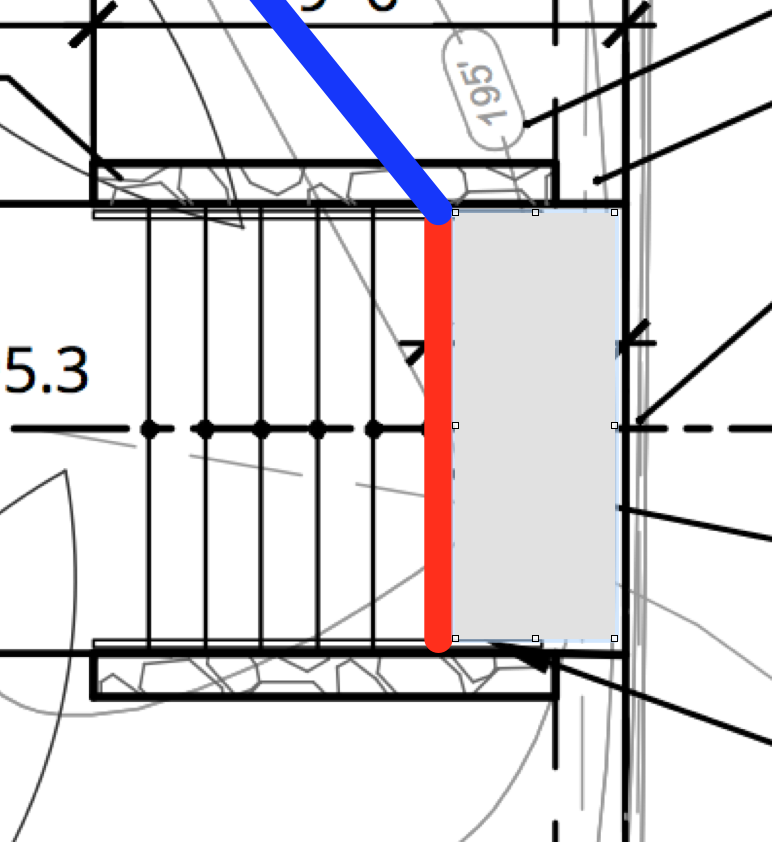One of the more frustrating aspects of building a house are the bureaucratic rules that are pointless. Along those lines is this story about our biofiltration basin.
When we original submitted our landscape plan, it included a lot of new impermeable surface area:
- larger roof profile
- more concrete for patios and such
- paver driveway
- walkways
The bottom line is that, we would have covered up a lot more of the ground that might otherwise have soaked up rain. Because we are preventing water from soaking into the ground, and replenishing the water table, the theory goes, we have to reproduce that using a ground water percolation basin. This was a system of drains and pipes that routed water into a huge basin filed with sand and gravel and earth, that would collect rain water and allow it to percolate into the ground, thus replenishing the ground water basin. The overall measure for the need for this was to determine the increase in impermeable space vs the old house and yard that we demolished.
Makes sense right? Well, it does until you realize that the type of rain we get here in Santa Barbara is either too light to soak much more than a half inch into the ground, or comes down all-at-once and runs off of the relatively hard packed soil completely. In other words, it doesn’t really soak in that much anyways. Even a percolation basin like this has limits of how much water it can soak up over time, so it would have included an overflow that dumped into the street (with all the other storm water).
To try and avoid the need for this, we redesigned our landscape and hardscape so as to include many more permeable surfaces. In fact, we ended up with about the same amount of impermeable surface as the old house and yard. Never mind that, our roof happens to be larger than a threshold size that forces us into what is called Tier 3 storm water management (the highest level). So, we still had to do some kind of storm water management.
With the redisign, this now includes a similar (but slightly smaller) network of pipes and drains, and, instead of a ground water percolation basin, now has a bio-filtration basin. A bio-filtration basin runs water through a similar system of sand, gravel, and earth to treat the runoff to remove any polutants. The difference is that, once processed, it dumps right back into the street with all the other storm water. Here is what our system looks like:

The requirement for this system is nonsensical for a number of reasons:
- It prevents us from directing water into places in our yard where it might otherwise soak in naturally; we are required to collect the water off of any impermeable surface, treat it through the basin, and then dump it to the street.
- There are no exceptions to the need to collect and treat the water. Take for example this tiny bit of concrete at the base of our front steps, perhaps a few square feet in size.

Never mind the size, and the fact that it is below the ability to gravity drain into the bio-filtration basin, and could very easily dump the few cubic inches of water it might produce to across the sidewalk and into the street, we are forced to collect that small amount of water with a drain, run it down to a collection basin, and them pump it back up to the bio-filtration basin.
- The bio-filtration basin doesn’t actually work. Because of our intermittent rain with long dry spells, any bacteria in the basin that might treat the soil will not thrive and very little bio-filtration will actually take place (the bacteria breaks down pollutants).
- The now filtered water collected form our much-cleaner-than-the-street yard is then dumped unceremoniously (by design) into the street to mix with the nice oily water that comes off the street.
I would gladly donate the tens of thousands of dollars this will cost to a charity of the city’s choice. But no, we are required to build this silly bureaucratic feel-good system.
The only thing good to come out of this is that we can divert the water this system collects into a storage tank to then use for watering. However, the water comes at a time (during rain) that you don’t need to water much, if at all, and it takes a very large tank to store enough water to make any difference.